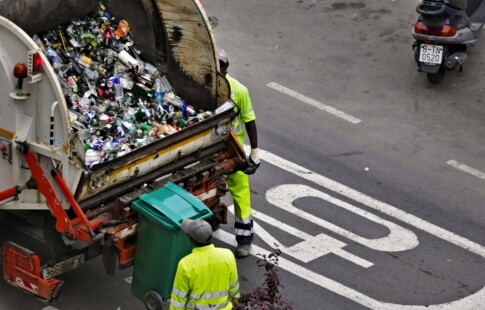
What is Carbon Storage and Why Should You Care? Common Questions Answered
We are reader-supported. When you buy through links on our site, we may earn affiliate commission.
People hear more about carbon storage because climate goals keep tightening while emissions remain stubborn. Heat waves strain power grids, smoke seasons linger, and storms increase insurance costs. Governments, scientists and corporations now prioritize every credible tool that keeps carbon dioxide out of the atmosphere. Carbon storage sits in that toolkit. It locks carbon in forests, soils, oceans, rocks or deep geologic formations instead of the sky. This guide answers the most common questions, clears up confusion and focuses on actions that align with daily life and public policy.
What is Carbon Storage?
Carbon storage means holding carbon dioxide where it cannot warm the planet. Nature already does this. Forests store carbon in trunks and roots. Healthy soils build organic matter that keeps carbon in the ground. Oceans absorb carbon dioxide through marine life.
Engineers add new options. They fit capture units to cement kilns, hydrogen plants and refineries. Those units separate carbon dioxide from exhaust, then compress it for transport. Operators move the gas by pipeline to injection wells and place it in porous rock thousands of feet below reliable seal layers. Over time, the gas dissolves into brines and reacts with minerals that keep it underground for the long term. Developers also build equipment that pulls carbon dioxide directly from ambient air and sends it to similar storage formations.
Three terms help organize the space. Carbon capture and storage (CCS) captures carbon at a smokestack and stores it underground, carbon capture, utilization and storage (CCUS) includes uses like synthetic fuels before final storage, while carbon dioxide removal (CDR) focuses on pulling legacy carbon from the air with forests, soils, enhanced rock weathering or direct air capture.
Why Does Carbon Storage Matter?
Excess carbon dioxide traps heat. The result stresses food systems, health, infrastructure and biodiversity. Energy demand rises during extreme heat, then falls hard during storms that knock out power. Heavy industry adds to the challenge because cement, steel and chemicals release carbon dioxide through both fuel use and process chemistry. Carbon storage helps those sectors cut emissions quickly without waiting for perfect one‑size‑fits‑all replacements.
Carbon storage also supports net‑zero targets, requiring rapid cuts and durable removal. Nature stores carbon now and delivers co‑benefits like shade, cleaner air and water retention. Geologic storage adds permanence measured in centuries to millennia. That permanence matters when communities want climate progress that lasts longer than a political cycle or a single wildfire season.
How Carbon Storage Works
Forests absorb carbon dioxide through photosynthesis and lock it in wood and soil. When land stewards restore degraded landscapes, those systems recover and store more carbon. Oceans also absorb carbon dioxide and move some of it into the deep sea through circulation and marine food webs.
Engineered pathways then add scale and precision. Capture systems at factories strip carbon dioxide from exhaust streams. Compression and dehydration prepare the gas for pipelines. Injection wells place it into deep rock layers with multiple confining seals above them.
Monitoring plans track pressure, fluid movement and chemistry to confirm performance. Direct air capture removes legacy emissions from the open air and uses the same transport and storage infrastructure. Together, these steps turn carbon management into a service that industrial clusters can buy, measure and improve.
Is Carbon Storage Safe and Effective?
Safety starts with design and rules. Developers choose storage sites with thick, laterally continuous seals and calm geology. Engineers plan injection to control pressure and keep fluids where they belong. Regulators require monitoring, reporting and verification so operators prove performance over time. Continuous monitoring and open reporting keep projects accountable from first injection through closure.
Experience backs that framework. Carbon capture and storage has run in the United States since 1972. Natural gas processing plants in Texas have already captured and stored more than 200 million tons of carbon dioxide deep underground — building a knowledge base that guides today’s projects.
Who Pays for What?
In 2023, the United States announced meaningful opportunities expected to boost CCUS, including $1.7 billion for carbon capture demonstration projects and $1.2 billion for direct air capture hubs under the 2021 Infrastructure Investment and Jobs Act. In Europe, the latest Innovation Fund round issued around $1.5 billion to CCUS projects, and the Connecting Europe Facility committed over $500 million to carbon dioxide transport and storage. Other notable funding includes the Netherlands at $7.3 billion and Denmark at $1.2 billion.
Tax credits in the U.S. also set the timing. Under the Inflation Reduction Act, developers can claim 45Q for projects that begin construction before January 1, 2033, and receive the credit for up to 12 years after the project enters service. The Annual Energy Outlook 2025 projects carbon capture deployment will slow as credits expire through 2050 — unless markets or policies step in.
What Fits Under the “Carbon Storage” Umbrella?
People encounter many terms at once, which makes the space feel crowded. The points below sort common approaches and show how they connect. Each one appears in public discussions about climate policy and investment.
Nature‑based approaches
Forests and soils store carbon as ecosystems recover and land stewards adopt practices that keep organic matter in place. Afforestation and reforestation plant trees that act as carbon sinks.
Ocean fertilization proposes adding nutrients to stabilize acidification, stimulate phytoplankton growth and increase the ocean’s carbon absorption potential. Enhanced weathering accelerates rock weathering to create minerals that hold carbon dioxide longer. Policymakers treat ocean fertilization with caution and close oversight because it influences marine ecosystems at scale.
Point‑source capture and storage (CCS)
Industrial facilities capture carbon dioxide before release, transporting and injecting it into deep rock formations. Long‑running projects in Texas show durable storage at the industrial scale.
Direct air capture (DAC)
Companies remove legacy emissions from the air and store them underground using the same transport and storage networks. U.S. hub funding and European storage buildouts help DAC projects share infrastructure and lower costs.
How Effective Is Carbon Capturing Now?
Effectiveness depends on the situation. CCS in cement and chemicals cuts emissions that lack easy alternatives, so it delivers high climate value per ton. DAC removes legacy carbon and pairs with permanent storage to deliver lasting net-negative outcomes. Nature‑based solutions scale fast and add co‑benefits for habitat and water, but they require good land management to avoid reversals.
Policy momentum now translates into steel, concrete and jobsites. U.S. infrastructure funds and 45Q push projects from feasibility to construction. European programs channel grants to capture equipment, pipelines and storage sites. Those programs create real markets where storage providers sell verified services, heavy industry buys them and communities hold operators accountable for monitoring and benefits.
What Can Individuals Do to Help?
Personal choices move fastest when they line up with systems change. The actions below pair everyday behavior with policy that shifts industrial baselines and rewards projects that prove real climate gains.
Back credible storage projects
Residents, workers and local officials can support projects that meet strong siting and monitoring standards. Public comments and community benefit agreements raise quality and trust. High‑bar permitting attracts capital, builds good jobs and cuts local air pollution.
Trim digital footprints where attention lives
Social and streaming activity drives real energy demand in data centers. One recent comparison estimates TikTok produces 2.63 grams of CO₂ per minute, versus 0.79 grams for Facebook and 0.46 grams for YouTube.
With its huge daily user base, TikTok releases about 40,151 tons of CO₂ per day, and the average user spends 45.8 minutes daily, which compounds that footprint across millions. Media teams and creators reduce autoplay, trim file sizes and adjust posting schedules to cut energy use without losing reach.
Favor removal with permanence
Tree planting improves neighborhoods and restores habitat. For long‑term climate value, buyers can favor removal credits that prove geologic storage or mineralization and publish firm monitoring plans. That preference rewards projects that deliver durable results and transparent reports.
More Frequently Asked Questions About Carbon Capture
Readers often share the same core questions about carbon storage.
Is carbon storage the same as carbon offsets?
Offsets often fund emissions reductions somewhere else. Carbon storage can underpin an offset, but it also stands on its own when an industrial site captures and stores its own emissions. Clear monitoring and reporting ensure buyers know what they pay for.
Can carbon storage solve climate change alone?
No — but it complements rapid cuts from clean electricity, efficiency and electrification. Storage reduces emissions from heavy industry that cannot fully electrify soon, and removal tackles legacy carbon that lingers for centuries.
Who should drive carbon capture deployment?
Governments set the targets, rules and incentives, companies build projects, and communities shape siting and benefits. For example, the U.S. funded carbon capture demonstrations and direct air capture hubs, while the EU expanded Innovation Fund awards and storage infrastructure. These moves de‑risk private investment and speed learning curves.
Will carbon storage raise energy bills?
Projects that add capture equipment raise operating costs at power plants, so utilities may ask regulators to adjust rates. Many developers focus early storage on cement, steel and fuels instead of the power sector, which shifts most costs into product prices rather than household bills.
Federal incentives and shared hubs reduce upfront costs and spread them across many users. Households can blunt any increases using efficiency programs, while regulators require utilities to prove that capture beats alternatives at the lowest reasonable cost.
Choose Momentum Over Myths
Carbon storage does not offer a free pass for polluters. It provides tools that cut hard‑to‑abate emissions and remove legacy carbon that would otherwise warm the planet for centuries. People who care about clean air, stable jobs and climate resilience can support strong rules, credible projects and smarter digital habits. Momentum grows when communities push for permanence, transparency and benefits that reach workers and neighborhoods. Keep cutting emissions, scaling storage that proves durability and backing policies that reward real climate performance. The sooner communities choose that path, the sooner everyone benefits.
Share on
Like what you read? Join other Environment.co readers!
Get the latest updates on our planet by subscribing to the Environment.co newsletter!
About the author

Steve Russell
Steve is the Managing Editor of Environment.co and regularly contributes articles related to wildlife, biodiversity, and recycling. His passions include wildlife photography and bird watching.





